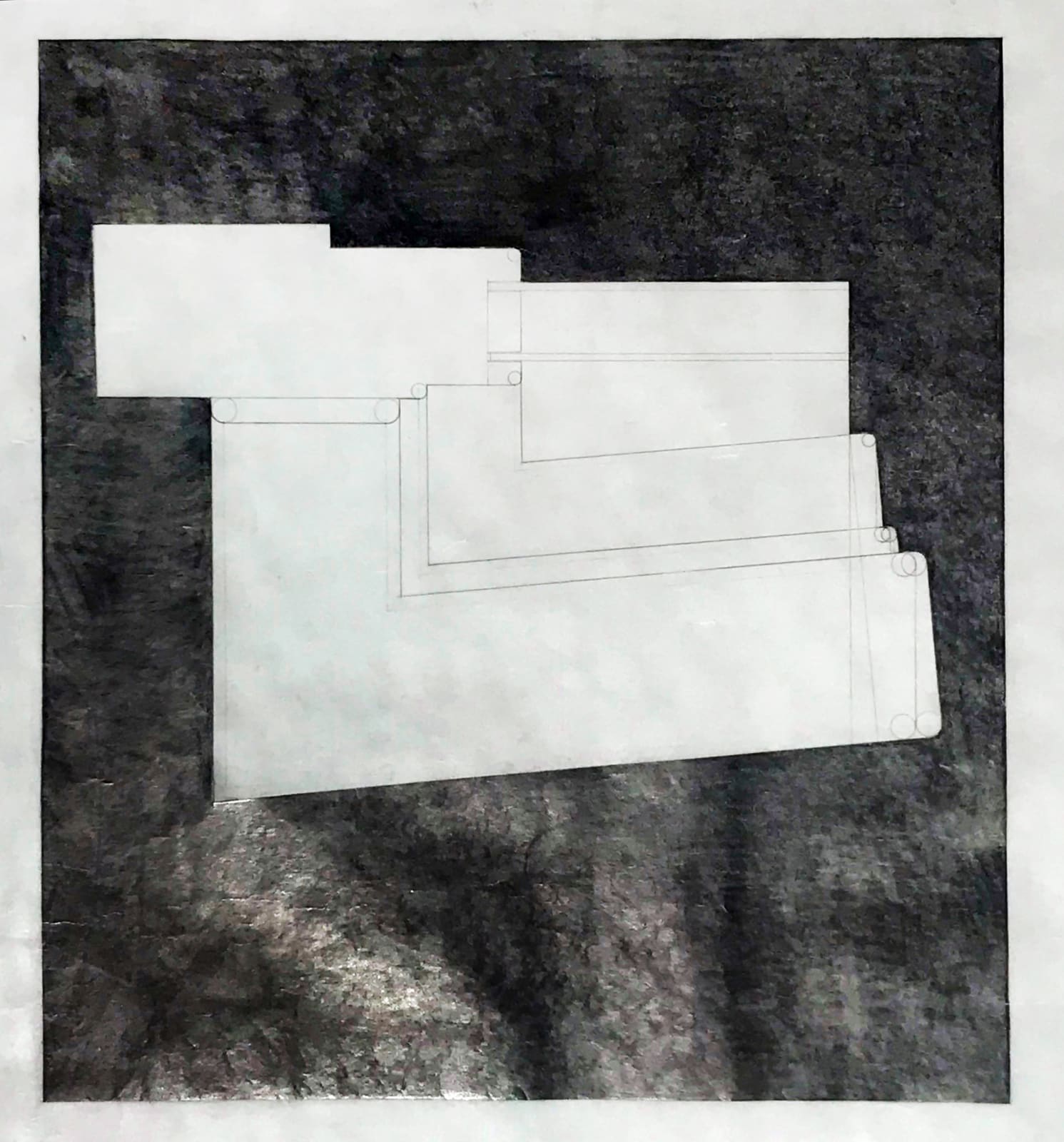Elizabeth Hatz
Permanent Window
Graphite on German tracing vellum
103 x 85 cm
drawing – permanence - gestalt
“The drawing is also a thing. Once the hand has traced on to the paper – the drawing has a physical presence, its own presence. It has a “Gestalt” and comes forward towards the viewer. This form of its own is also beside its originating image, impulse, idea, search or context.
It is a mark. It makes a mark.
As if saying: “I may be open, light, tentative – but I am definitely here.””
From E Hatz ”Making a Mark” in Peter Märkli Drawings
the drawings in hard clutch pencil and 9B graphite on vellum appear as both gestalt and substance, with a somewhat metallic character; they attain a certain tactility, materiality and thinglyness. what appears transient, like a door swinging open, is transposed to tacit figure or object, that which deviates becomes prominent – a kind of quality. conventional and clinical drawing methods are combined with an eidetic vision and with processes linked to memory. objects here receive a meaning with an independent power to influence the material language. this provides a space for a speculative investigating process, a mix of provocation and concentrated monitoring.
when Gerhard Richter makes his monumental single solid brush stroke (Stroke (on Red) 1980) during a time that turns its back on painting, perhaps he produces, paradoxically, the most obvious art statement imaginable. a resistance to impasse, to fixed interpretation, is in the work itself – that object which survives the interpretation, positioning itself openly towards the receptor, as irrefutable artefact. since it is absurdly sluggish, silent and static, one may perceive architecture as being diametrically opposed to ourselves – as a background to light and movement, there is solid darkness. against such stasis the motion of human activity stands out all the more clearly. even works that disregard obduracy, and fully embrace the ephemeral, transient or mobile, have in general an extension over time, making them last longer than intended, and longer than their cultural codes may be viable. what is then created is a body of leftovers, things perceived as petrified fragments simply because they appear purposeless and cannot be easily interpreted. perhaps this is not when they cease to be architecture but when they begin to be architecture – potential architecture. precisely where they evade the simplified reading or cultural code and instead assume the sphinx-like promise of art, do they also perhaps become self-asserting, immortal and necessary – beyond use.
“Because of their outstanding permanence, works of art are the most intensely worldly of all tangible things(…)” (…)
“Nowhere else does the sheer durability of the world reveal itself so spectacularly as the non-mortal home for mortal beings”(…) (Hannah Ahrendt on The Permanence of the World and the Work of Art, in The Human Condition). in Odd Models the focus is on architecture as thing and gestalt (figure) rather than room, as stillness rather than motion. the Swedish (Germanic) word gestalt signifies both a physical body or object as well as a more abstract concept of form or figure. whereas the first involves material matter, the second deals with projection and abstract figure. but the actual meaning is also a combination of the two and hence has a third meaning, touching persona, shape, and character.
This work is priced unframed. Please enquire for framing options.

